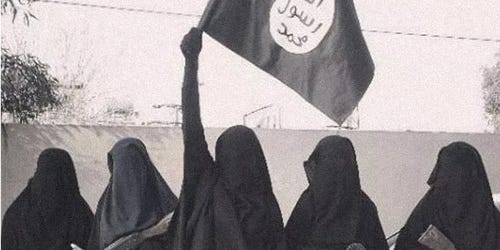SUICIDE BOMBERS: Meet The Black Widows

Did you know that the first recorded suicide bombing in history took place in 1881, and that between 1981 and September 2015 a total of 4,814 suicide attacks occurred in over 40 countries, killing over 45,000 people?
Among the most famous group of female suicide bombers are those referred to as the ‘Black Widows’ by the Russian media. They became known at the Moscow theater hostage crisis of October 2002. The term 'Black Widows' probably originates from women being widows of men killed by the Russian forces in Chechnya.
Fighting for independence in Chechnya, the Black Widows, often women who had lost husbands and brothers to the conflict, carried out over 65% of the 23 terrorist attacks linked to the Chechen movement since 2000. They were associated with terrorist attacks in Chechnya between 1999 and 2005.
Attacks carried out by women have a range of tactical advantages. Firstly, they attract significant media interest, sending a message that the cause has spread beyond a radical male youth. Secondly, the bombers attract less suspicion than their male counterparts, and are able to access areas which men cannot.
The Black Widows wear black dresses and dark clothing that covers their bodies from head to toe. This attire is supposed to symbolize their personal losses from the Chechen wars. In 2003, the Russian journalist Yulia Yuzik coined the phrase "Brides of Allah" when she described the process by which Chechen women were recruited by Basayev and his associates; the phrase was also used again after the Beslan attack, as the title of an installment of the Russian NTV programme Top Secret.
Furthermore, to terrorists, Black Widows are considered less valuable than male terrorists, since male terrorists require formal training, while women terrorists are viewed as expendable. In some cases, when opinions do not match between Black Widows and male terrorists, male terrorists detonate bombs strapped onto Black Widows to get rid of them. Additionally, women terrorists are strategically appealing because they symbolize opposing their traditional roles of being obedient, also women terrorists arouse less suspicion, which terrorists groups are able to take advantages of.
Female suicide bombers have been used in a wide range of conflicts. The University of Chicago recorded 125 attacks involving female suicide bombers between 1981 and 2010 – just over 5% of those they recorded. Between 1998 and 2001, according to professor Richard Pape of University of Chicago, the average number of deaths caused by a suicide attack is 13 people, while the average deaths caused by suicide attacks from Black Widows is 28, meaning they are twice more deadly than the average suicide bomber.
There are currently forty-seven Chechen Female bombers that have been confirmed based on 25 successful bombings. These attacks methods include detonating bombs on trucks, cars, usage of explosive devices, or using suicide belts or bags. Some have even detonated their bombs on airplanes.
According to Marc Sagement, who takes part in the Foreign Policy Research Institute's Center for the Study of Terrorism, there is a strong relationship between becoming a Black Widow and having personal connections to terror networks. In other words, recruitment of Black Widows usually occurs through friendships or familial relationships. Approximately, 27 percent of Black Widows were married or had personal connections to terrorists before becoming terrorists themselves. Furthermore, Black Widows had similar prior experiences before becoming terrorists that include losing close family members that resulted from conflicts with the Russian forces.
Although Chechen suicide bombers do not have personality disorders prior to becoming terrorists, research shows that they have deep personal trauma, which leads them to embrace terrorist ideologies causing them to join the Black Widows. Furthermore, Chechens believe it is ethically correct to take revenge if one's loved one has died. Another perspective of how Black Widows form is that after post traumatic events, people in general, not just Chechen women, tend to turn to extreme religious views to form a sense of identity and belonging. Thus, jihadist ideologies provides this medium for Chechen women who experienced extreme post traumatic experiences thus transforming them into Black Widows. Combined with personal trauma, cultural responsibility for social justice, and extreme religious viewpoints to take revenge, these factors mold Chechen women to become Black Widows.
Female suicide bombers are still used today for these reasons, and particularly by the Islamist militant group, Boko Haram. While few suicide attacks took place anywhere in the world from 1945 until 1980, between 1981 and September 2015 a total of 4,814 suicide attacks occurred in over 40 countries, killing over 45,000 people. During this time the global rate of such attacks grew from an average of three a year in the 1980s to about one a month in the 1990s to almost one a week from 2001 to 2003 to approximately one a day from 2003 to 2015.
Sources: AOAV | Wikipedia
_1754475682.webp)


